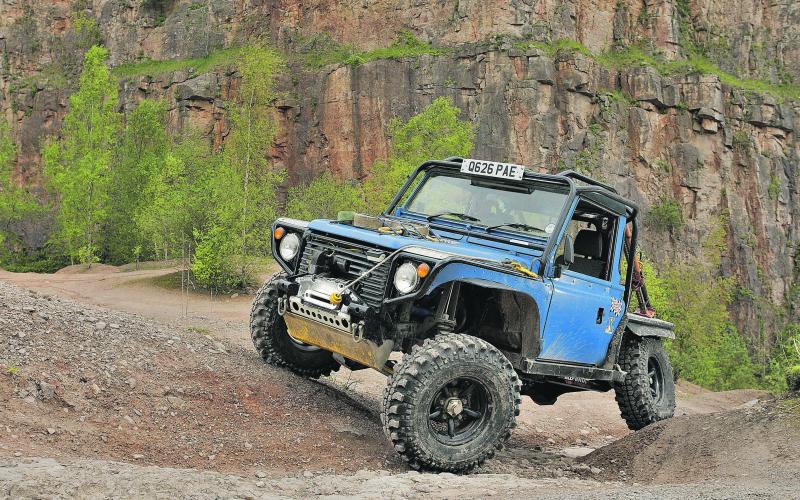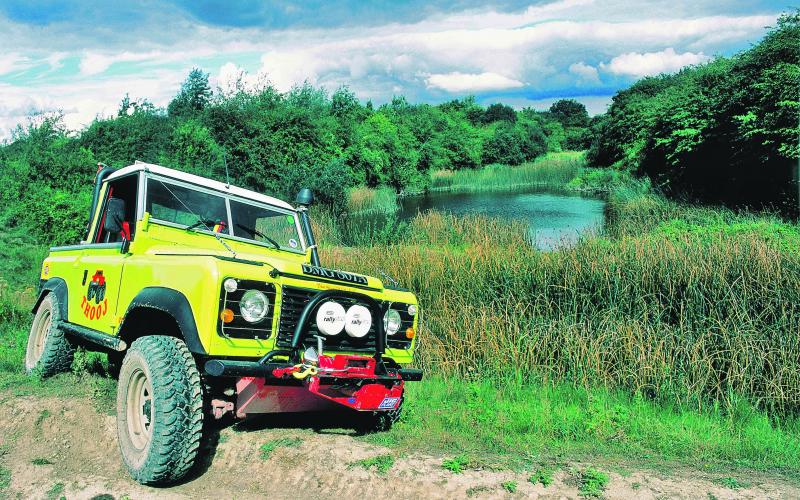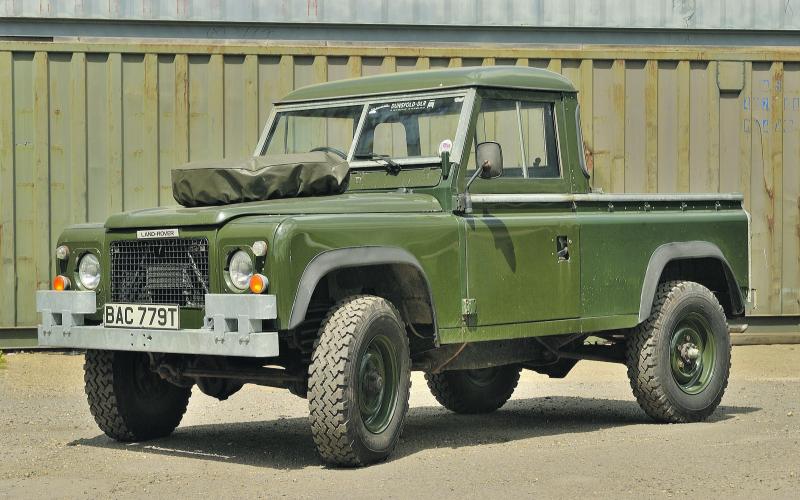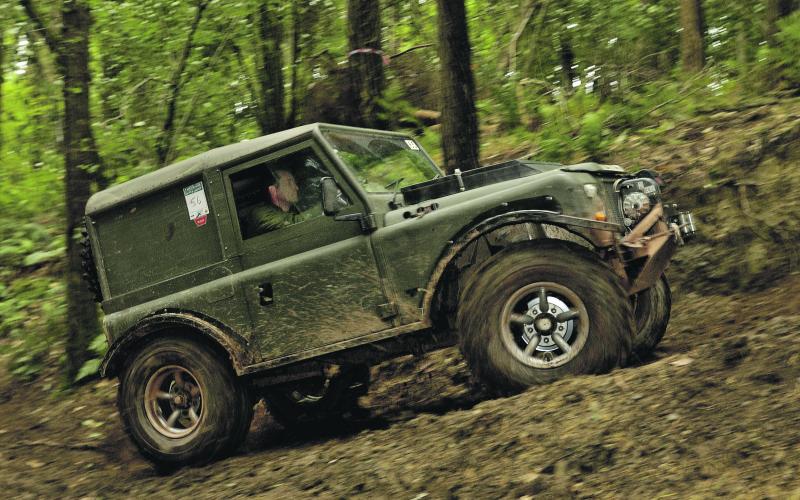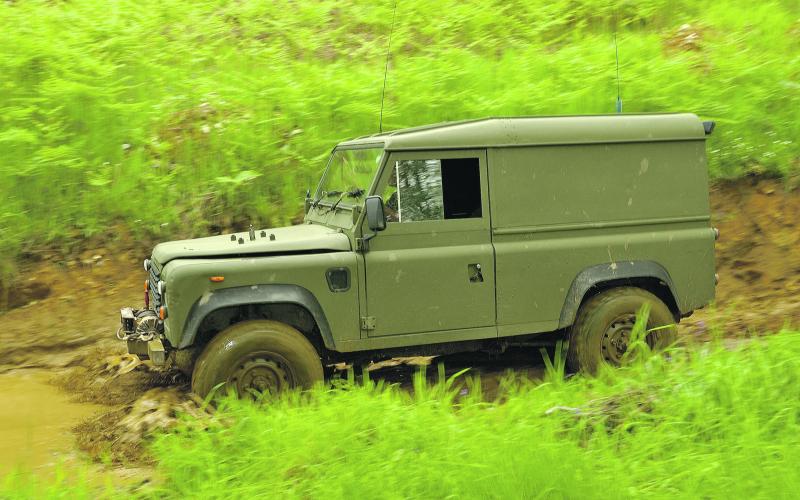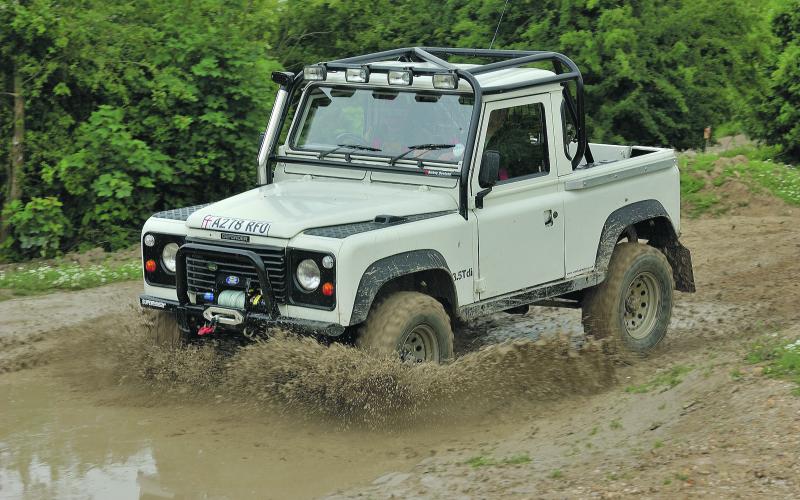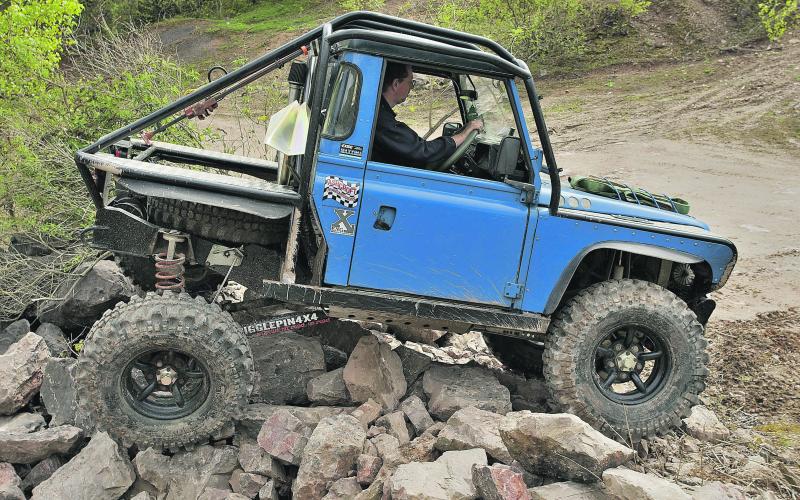Have Hybrids Had Their Day?
Back in the days when derelict Range Rovers and Series IIIs were ten a penny, 90s still cost a fortune and the government didn’t insist on smashing up everybody’s fun, building hybrids was an everyday part of the Land Rover scene. Today, far less people are doing it – though if you want a specific kind of Landy that Solihull never built, chances are your only option will still be to do it yourself.
We all have different visions of the ‘perfect’ Landy. Each and every one of us has our own way of building up our dream truck. Some would prefer to bolt on various enhancements and make minor upgrades to achieve the end result, while others could only ever be satisfied by starting from a bare chassis and creating something from the ground up.
A good many people are doing the latter now, by investing in semi-derelict early 90s and 110s with the specific aim of bringing them back to factory-fresh condition on a new galvanised chassis. But back in the days when even the worst 90 would fetch the sort of money that priced them way out of many people’s pockets, the chosen way to do it for most was to build a hybrid.
In theory, a hybrid can be the best way to get as close to your perfect vehicle as possible. Think of it like a greatest hits album: all the best bits from your favourite band collated into one. Rebuilding a 90 is all very well, but if you happen to like the split-screen look the only way is to bring the bulkhead from a leafer to the party. And so on.
In the golden era of hybrid building, most used a Range Rover chassis and some sort of mixture of Series I, II and III body panels. There have been others – Discovery chassis became increasingly popular as the first Mk1 models started turning into dogs, and wackier examples of the hybrid builder’s art have even included a coil-sprung 101, but there was a lengthy spell when most of the ‘90s’ you’d see at trials around Britain had in fact been built on their owners’ driveways.
To put it bluntly, people who wanted a 90 but couldn’t afford it simply built one instead. Cutting up a Range Rover made sense because you got a coil-sprung chassis, V8 engine, disc brakes and full-time four-wheel drive before you started. And rough ones were a dime a ton.
But times change. Hybrids aren’t so much like a greatest hits album now as a tired old rock band pretending they’re still 21 years old. Some of them from back then are still on the road – doggedly in most cases, but a few even remain respectable after all this time.
In among all the relics, though, as with the music industry, it’s not all just sad old rockers trotting out cabaret classics from the days when they still wrote new songs. There’s the occasional new hybrid in there too, built either as a personal challenge by its owner or to do something no standard Land Rover can offer.
All the same, when’s the last time anyone you knew built themselves a coiled 88” instead of buying a 90? It’s fair to ask a blunt question: have hybrids had their day?
It’s a question that answers itself to a great extent. But though they clearly have had their day in the forefront of the Landy culture, people are still building them. David Longmore, for example, who put his 100” hybrid on the road earlier this year – which was a lot later than he set out hoping for.
‘They say if you set yourself a time frame to complete a build, treble it and add a bit more,’ says David. ‘That’s probably a more accurate time in which you’ll get it finished!’
David started to build his ideal truck back in the summer of 2012. His hybrid – or Monty as it’s known – is based on a 1996 Discovery chassis and uses elements of Series IIIs, Defenders and other Discovery parts along with a substantial amount of DIY fabrication.
‘Don’t ever underestimate the build. You have to be prepared to put in the hours because it’s not easy. Not everyone has the patience. Building a hybrid has to be a labour of love, otherwise it won’t work.’
Is this perhaps why hybrids are less popular today? Is there no longer a need for them in the off-road scene?
‘They are less popular today,’ David agrees. ‘Government restrictions can prove to be a stumbling block and put people off. Also, you could get yourself a cheap Disco these days, put on some off-road tyres and you’ve got a vehicle with the desirable 100” wheelbase and a fairly capable truck straight away.
‘You need to have some sort of vision if you’re going to build a hybrid. I wanted to have a truck that looked like a Defender, but with highlights from a Series III. I love my hybrid now it’s finished – it runs beautifully and has the older looks with more modern running components.
‘I wanted to challenge myself and have a unique vehicle – not the run of the mill. Knowing that I’ve put every nut and bolt together on it gives me a lot of satisfaction.
‘Hybrids are for the braver builders. If you have the knowledge and are up for the challenge, then go for it!’
David’s rationale for building a hybrid covers more than just the practicalities of achieving something (a 100” Defender, in this case) that’s not available any other way. But the wheelbase has become more and more relevant with the passing of time.
Yes, people have stopped building DIY 90s, because buying a real one is cheaper. But something they haven’t stopped doing is wanting a 100” Defender – and though Land Rover built a few prototypes, they never put one of those into production.
For many years now, seasoned hybrid builders have said the only reason they’d ever do another would be to get one with a 100” wheelbase. Any other reason, and it’s just not worth the effort.
It’s ten years, for example, since Jonathan Fearn completed his hybrid. Like David, he did it because he wanted a 100” – though he took a different route to get there, shortening a 110 chassis to create his ideal Defender.
When we talked to Jonathan back then, he spoke about the extra hassle placed on hybrid builders by the government’s Single Vehicle Approval (SVA) regulations. These lay down a wide-ranging set of rules about what you can and can’t do when modifying a vehicle or building one from scratch – and if the inspector doesn’t like what he sees, you won’t get to use your hybrid on the road.
In theory, SVA (and IVA, Individual Vehicle Approval, which is being phased in to replace it) is there simply to make sure people who build or heavily modify their own cars aren’t putting others at risk in the process. But like most good ideas, it’s become a victim of those who run it. Most Landy owners we’ve spoken to who’ve been through the SVA process have been full of praise for the individual tester they’ve had. But when you hear stories of people being told to cut their vehicle up and rebuild it from scratch because one bracket was welded on 3mm too close to another, it’s hard not to see how the test has gained a reputation for being self-serving, officious and no use to anyone except the paper-pushers who invented it.
Fair’s fair, though, and we all know full well that back in the day, some of the hybrids that ended up on the road had no business being there. There’s only so much that the MOT test can pick up on and, though SVA/IVA wasn’t invented to make life hard for hybrid builders, if it helped take the duff ones out of circulation that’s got to be a point in its favour. At any rate, Jonathan’s 100” is proof that so long as you don’t want to build something dangerous, following the rules, tedious though it may be, needn’t prevent you from building your Land Rover just the way you want it.
Besides, there’s another advantage to building a vehicle from the ground up. David and Jonathan both agree that by the time you’ve done that, you’ll know it inside-out.
‘I know how it all fits together, which makes it a lot easier to suss faults,’ said Jonathan. Building your own vehicle means knowing what parts you used, too, so no only do you not have to spend half your life trying to work out what’s gone wrong, you don’t have to spend the other half trying to identify what it’s gone wrong with.
‘It does make it easier to maintain,’ confirms David. ‘Knowing it so well means I can normally get to the root of the problem that bit quicker.’
It does help, though, if the build has gone to plan. Which means it’s a good idea to have one.
Do as much research and preparation as you possibly can prior to starting the build – and, while you’ve to be flexible to get round problems that crop up along the way, try to avoid any unnecessary deviations that’ll end up giving you more hassle than you thought could be possible.
Les Brocklehurst built one of the best challenge-spec Land Rovers we’ve seen. But getting there was a huge struggle – his 98” trayback had been through several big operations by the time he considered it finished.
Back in 2000, Les had entered the off-road scene and decided a hybrid was the way forward. Using a 1974 Range Rover chassis, he created a typical tricked-out 88” coiler and was ready to go winching.
A few years later, alas, Les had a bit of a run-in with the DVLA, who pulled the truck in for an SVA test so he could continue to drive it to and from events. The whole vehicle had to be all stripped down for inspection, so while he was about it he decided to increase the wheelbase to what he’d found was a more challenge-friendly 98”.
‘There were several times that I was going to pack it all in and take up knitting,’ he said. ‘Just the sheer amount of work involved, having already built a competent-ish truck which you then have to take apart and basically start again for the SVA.
‘It’s even more soul-destroying because you have no choice in the matter. Would I do it all again? Err… no!’
Hindsight is a fine thing, but sticking with the 100” wheelbase in the first place would probably have been a better bet. Especially that the tyres used at the top of the winch game have got so much bigger (remember when a 7.50 was considered outrageous?), just taking the rear overhang off a Discovery chassis and basing your Defender-lookalike on that makes more sense than ever – whether you want to go hardcore with your off-roading or just build a truck that blends the neatness of a 90 with the roominess of a 110. At the very least, think of all the tea cosies Les would have been able to sell on eBay if he’d not had to do all that extra work.
A hybrid is a very personal kind of Land Rover, and opting to build on is a very personal decision. There are many boxes to tick before you even lift a spanner. Do you have the technical ability? Do you have a set plan and a definitive goal? Do you have the time and patience?
It also helps to have an understanding wife, according to David, when you’re going to spend hour after hour since many an hour fabricating parts in the shed or bolting them together on the driveway.
If you’re going to do it, clear your entire calendar for the rest of the year. And next year as well. 2016 could well snuff it, too.
That’s the bad news. The good news is that if you know what you’re at with the spanners and welder, your eyes are open to the costs and you know exactly what it is you want to build, the next year (or two, or three) is going to be great fun and immensely rewarding. And at the end of it, you’re going to have the truck of your dreams.
So, have hybrids had their day? Yes and no. Without question, building this kind of Land Rover has been replaced in the mainstream by refurbishing early 90s and 110s. But if you want a truck that’s uniquely yours, that’s just the way you want it and not available any other way, hybrid building is not dead. On the contrary, it’s no longer a dogged act of labour but a specialised form of art. And if the examples we’ve looked at in this article are anything to go by, it’s yielding better Landies than ever.




